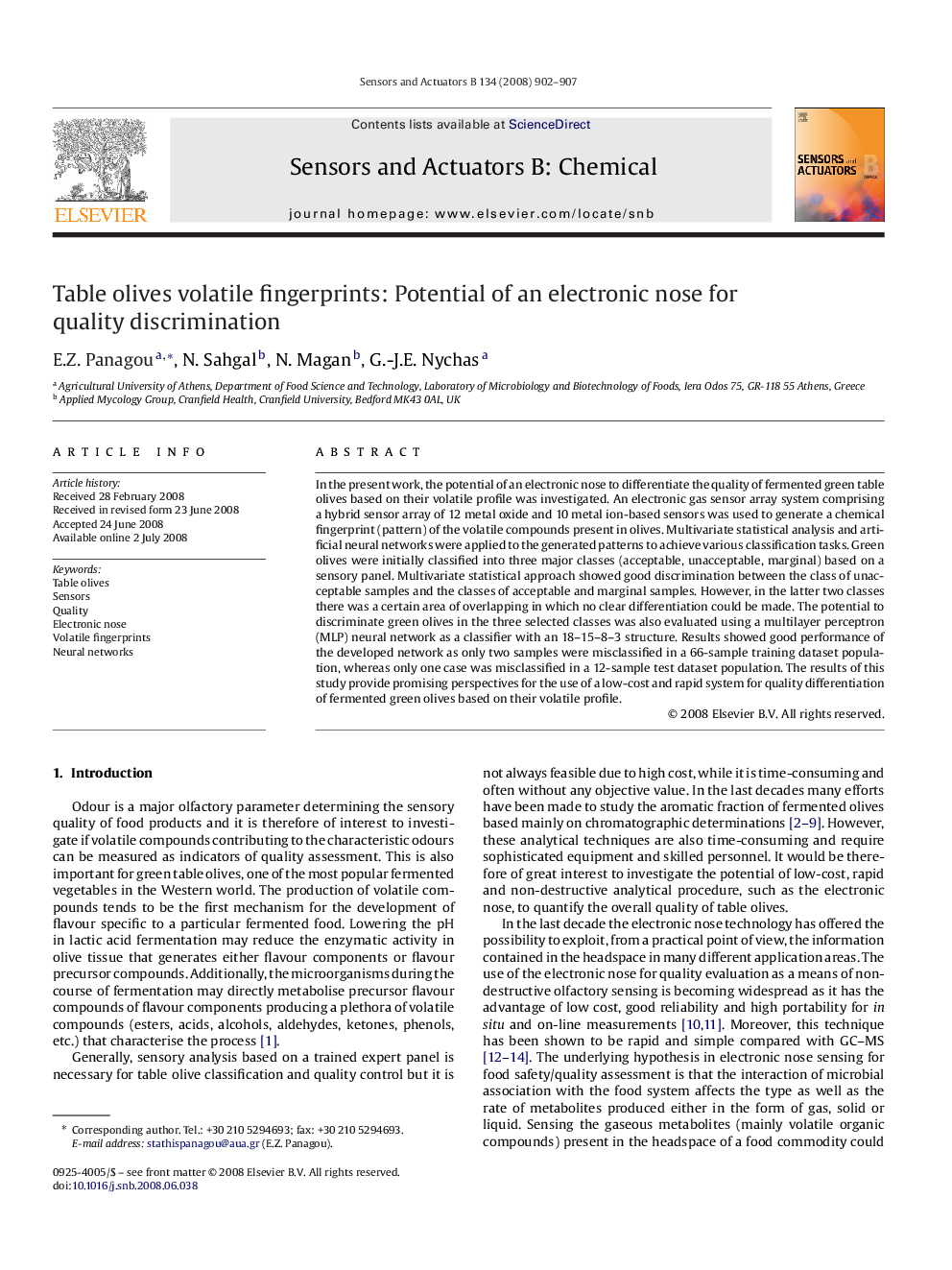| Article ID | Journal | Published Year | Pages | File Type |
|---|---|---|---|---|
| 741261 | Sensors and Actuators B: Chemical | 2008 | 6 Pages |
In the present work, the potential of an electronic nose to differentiate the quality of fermented green table olives based on their volatile profile was investigated. An electronic gas sensor array system comprising a hybrid sensor array of 12 metal oxide and 10 metal ion-based sensors was used to generate a chemical fingerprint (pattern) of the volatile compounds present in olives. Multivariate statistical analysis and artificial neural networks were applied to the generated patterns to achieve various classification tasks. Green olives were initially classified into three major classes (acceptable, unacceptable, marginal) based on a sensory panel. Multivariate statistical approach showed good discrimination between the class of unacceptable samples and the classes of acceptable and marginal samples. However, in the latter two classes there was a certain area of overlapping in which no clear differentiation could be made. The potential to discriminate green olives in the three selected classes was also evaluated using a multilayer perceptron (MLP) neural network as a classifier with an 18–15–8–3 structure. Results showed good performance of the developed network as only two samples were misclassified in a 66-sample training dataset population, whereas only one case was misclassified in a 12-sample test dataset population. The results of this study provide promising perspectives for the use of a low-cost and rapid system for quality differentiation of fermented green olives based on their volatile profile.
